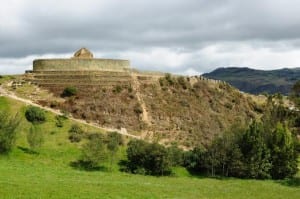Ecuador before the Incas
LiveTheLifeinEcuador | April 15, 2016
 The conquering Incas ruled what is now known as Ecuador from around 1450 to the 1500s and exerted a great deal of influence in shaping the country’s culture.
The conquering Incas ruled what is now known as Ecuador from around 1450 to the 1500s and exerted a great deal of influence in shaping the country’s culture.
However, even before the Incas came, Ecuador had already nurtured a rich civilization that left an equally indelible mark in the country’s history.
Ecuador before the Incas
The Valdivia
The Valdivia was the first permanent culture in Ecuador. It was believed to have existed between 3500 and 1800 BC, and was formed by people who migrated west from Brazil.
Pottery was an important part of Valdivia culture. It is believed that the pieces began as simple, functional clay objects. Decorative work appeared in later examples, until the practice evolved into sculpture produced around the feminine figure of “Venus of Valdivia.”
The Venus of Valdivia figurines depict pregnant and birthing women with prominent breasts and genitalia. The figurines are believed to have been used for fertility rituals.
The Chorrera
Chorrera culture is considered the most influential group in Ecuador’s “Formative Period” (4000 to 300 BC). It spanned the Pacific lowlands to the Andean highlands and even southern Colombia.
Pottery was also the trademark of Chorrera culture. It included utilitarian and artistic pieces characterized by a highlypolished finish and life-like depictions of plants, animals, buildings, fruits, and humans. While the earlier Machalilla culture appears to have greatly influenced Chorrera pottery, new forms– such as the whistle bottle – originated from this culture.
Chorrera and Machalilla cultures practiced skull deformation, which involved elongating and flattening the head for social status.
Other cultures
Around 600 BC, cultures that included the Bahia, Guangala, La Tolita, and Panzaleo developed hierarchal societies ruled by shamans and long-distance traders.
The Panzaleo is said to be the first culture to practice head shrinking or “tzantza” for ritual or trade purposes.
More cultures were integrated into early Ecuadorian society, including the Mantenos, the Caras, the Puruha, the Quitus (from which the present-day city of Quito was named),and the Cañari, who occupied present-day Cuenca.
The Incas eventually conquered the strongest cultures of the time: the Quitu-Caras, the Puruhá and the Cañari.
Modern indigenous groups in Ecuador are descendants of these early cultures and are stalwarts of Ecuadorian identity.
Know more about Ecuador by following our blog.

